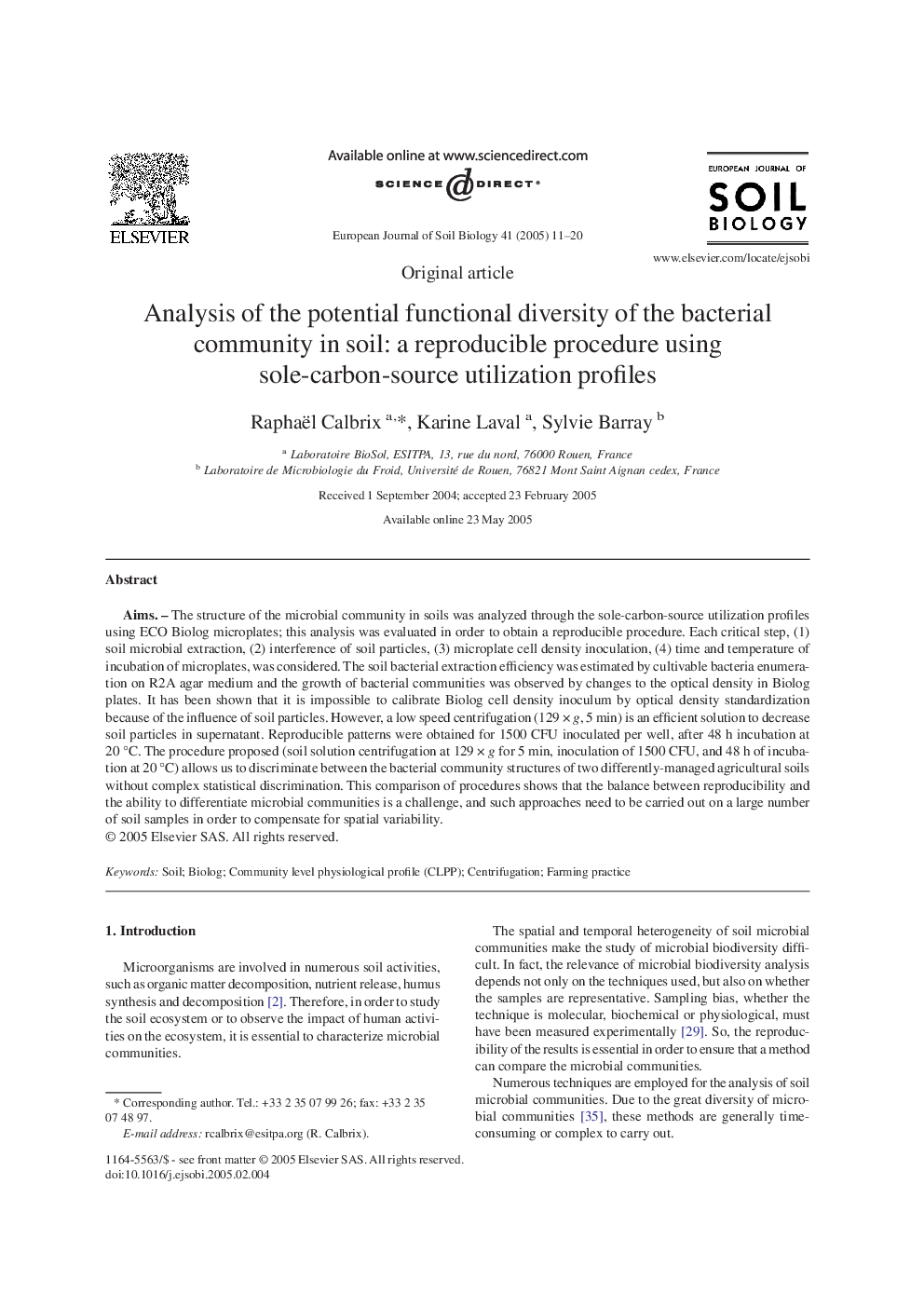| Article ID | Journal | Published Year | Pages | File Type |
|---|---|---|---|---|
| 10110178 | European Journal of Soil Biology | 2005 | 10 Pages |
Abstract
Aims. - The structure of the microbial community in soils was analyzed through the sole-carbon-source utilization profiles using ECO Biolog microplates; this analysis was evaluated in order to obtain a reproducible procedure. Each critical step, (1) soil microbial extraction, (2) interference of soil particles, (3) microplate cell density inoculation, (4) time and temperature of incubation of microplates, was considered. The soil bacterial extraction efficiency was estimated by cultivable bacteria enumeration on R2A agar medium and the growth of bacterial communities was observed by changes to the optical density in Biolog plates. It has been shown that it is impossible to calibrate Biolog cell density inoculum by optical density standardization because of the influence of soil particles. However, a low speed centrifugation (129 à g, 5 min) is an efficient solution to decrease soil particles in supernatant. Reproducible patterns were obtained for 1500 CFU inoculated per well, after 48 h incubation at 20 °C. The procedure proposed (soil solution centrifugation at 129 à g for 5 min, inoculation of 1500 CFU, and 48 h of incubation at 20 °C) allows us to discriminate between the bacterial community structures of two differently-managed agricultural soils without complex statistical discrimination. This comparison of procedures shows that the balance between reproducibility and the ability to differentiate microbial communities is a challenge, and such approaches need to be carried out on a large number of soil samples in order to compensate for spatial variability.
Related Topics
Life Sciences
Agricultural and Biological Sciences
Soil Science
Authors
Raphaël Calbrix, Karine Laval, Sylvie Barray,
